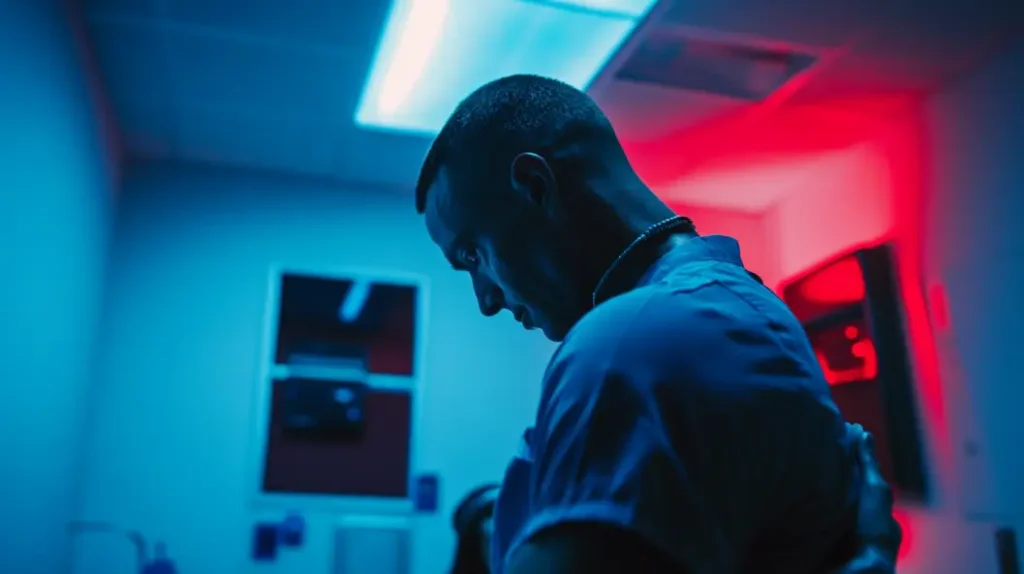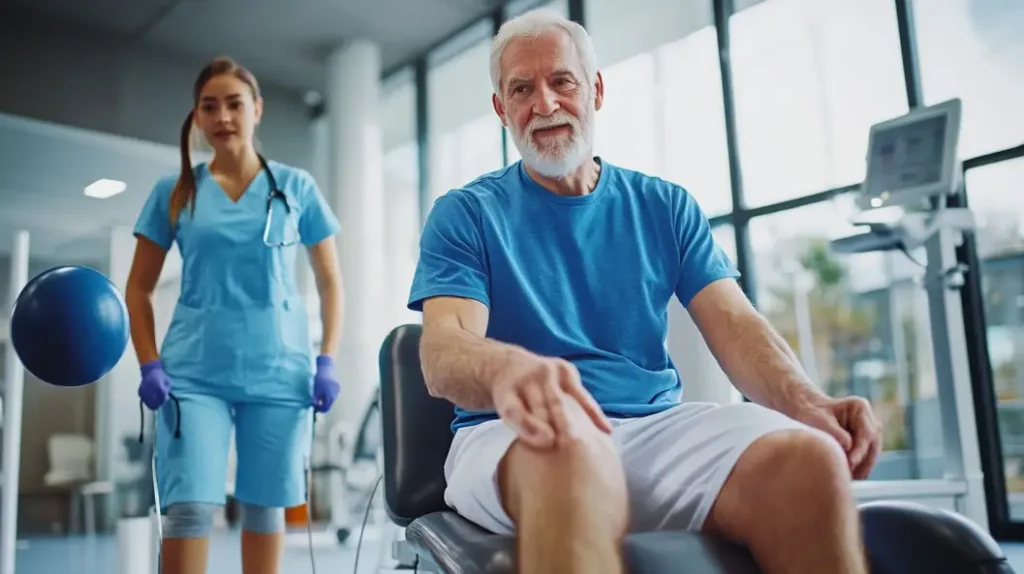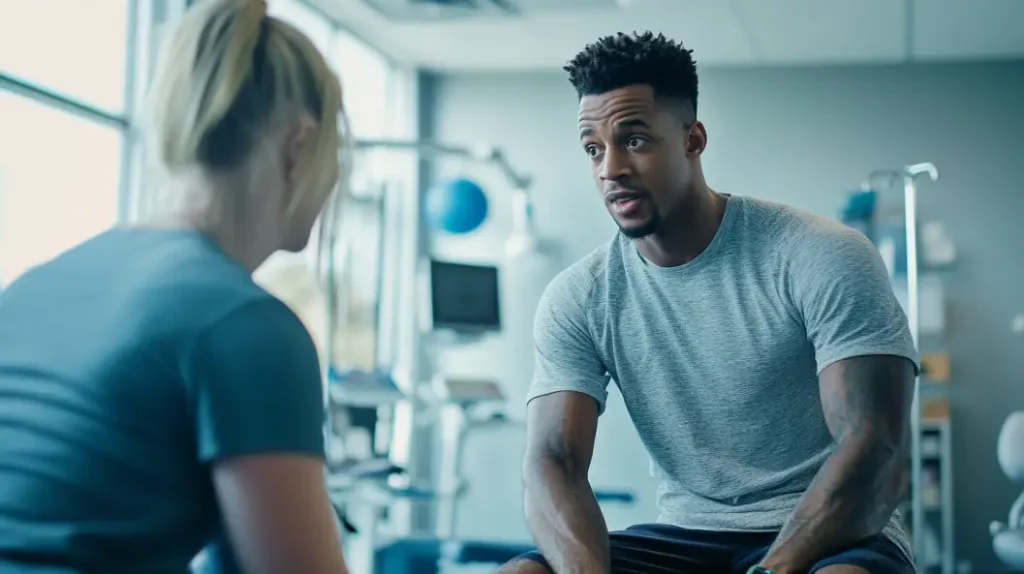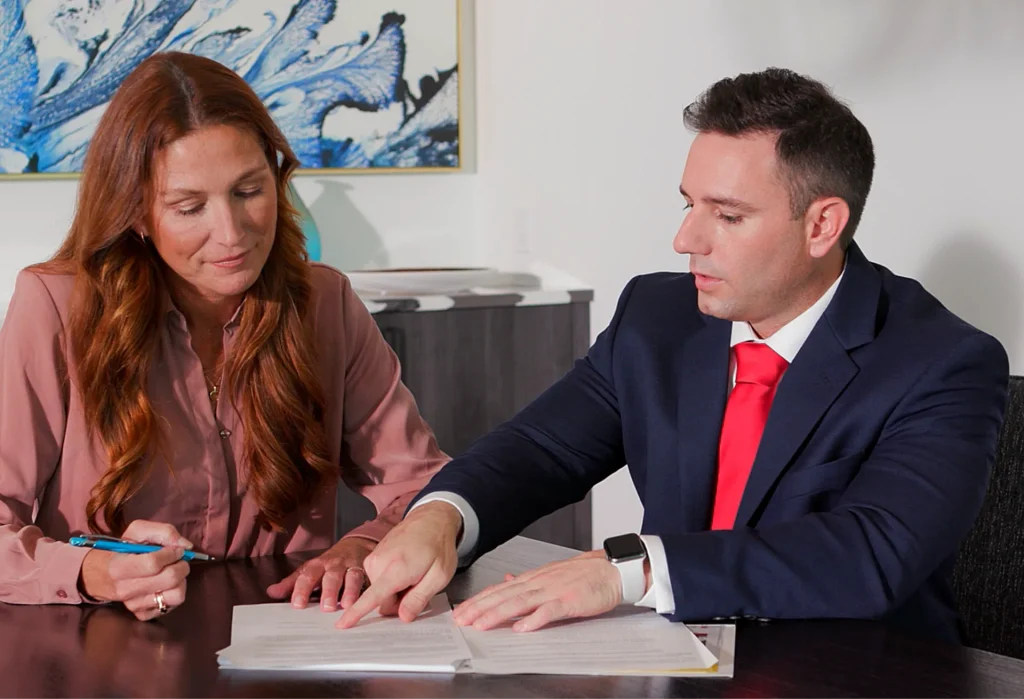After experiencing a car accident, whether it was on Manatee Avenue on your way home, or on US 301 heading to work, you may find yourself dealing with unexpected, persistent pain that seeps into every corner of your daily life. Whether it’s a constant ache or sharp, sporadic discomfort, pain from an accident can make even simple tasks—like sitting at a desk, bending down, or driving—feel daunting. It’s normal to feel overwhelmed, wondering if you’ll ever return to your normal, pain-free routine. While seeking strong legal representation is essential to protect your rights and secure the resources you need, it’s equally important to take steps to manage your physical well-being. Recovery isn’t just about healing injuries; it’s about restoring your comfort, mobility, and quality of life.
One of the often-overlooked aspects of pain management post-accident is posture. How you sit, stand, and move can play a pivotal role in alleviating pain and preventing further complications. Poor posture can exacerbate muscle tension, increase pressure on joints, and lead to imbalances that worsen pain over time. On the other hand, good posture supports your body’s natural alignment, allowing your muscles to work more efficiently, easing strain, and reducing pain. As experienced Bradenton car accident lawyers, we understand the unique struggles accident victims face, not only in securing justice but in finding the right tools for recovery. Our team is dedicated to not only advocating for you legally but also empowering you with strategies to support your physical healing.
At the law firm of Goldman, Babboni, Fernandez, Murphy & Walsh we’ll dive into how small adjustments to your posture can have a big impact on long-term pain relief after an auto accident. We’ll walk you through practical, achievable tips to improve your posture—helping you to feel more comfortable, reduce daily discomfort, and enhance your overall quality of life during this challenging recovery journey.
At the law firm of Goldman, Babboni, Fernandez, Murphy & Walsh, we recognize that even small changes can make a significant difference in your recovery journey. By focusing on something as simple yet powerful as posture, you can take active steps toward relieving pain and supporting your body’s healing process. Understanding how posture influences pain is essential, especially after an accident, as the ways you sit, stand, and move can either ease or exacerbate your discomfort. Let’s explore the connection between posture and pain more deeply to uncover how maintaining proper alignment can become a cornerstone of your recovery.
How Posture Impacts Pain After a Car Accident

Following a car accident, maintaining proper posture becomes more important as a part of pain management and recovery. Injuries sustained in an accident can weaken certain muscles and strain others, making it challenging to maintain good posture. When you sit, stand, or move in ways that don’t support your body’s natural alignment, poor posture can add pressure to already vulnerable areas, such as the back, shoulders, and neck. This strain can cause the muscles and ligaments in your spine to work overtime, leading to muscle fatigue, joint irritation, and even inflammation. Over time, these stresses can amplify pain levels, intensify discomfort, and potentially delay your recovery.
For accident victims experiencing ongoing pain, poor posture may be contributing to persistent symptoms, and consulting a healthcare provider can help identify posture-related pain sources. At the same time, a Bradenton car accident attorney can help ensure you receive the right medical care and pursue compensation for your injuries. Legal support is crucial, as it can connect you with resources and treatments—such as physical therapy or ergonomic consultations—that specifically address posture-related issues, helping you manage pain and support healing more effectively.
Recovering From Whiplash Injury Pain
Whiplash, or cervical radiculopathy whiplash, is one of the most common injuries in car accidents and can significantly impact posture. This injury results from a rapid back-and-forth motion of the head during impact, which can overstretch and damage the muscles, ligaments, and nerves in the neck. Whiplash often leads to a forward head posture, where the head juts forward, misaligning it from the spine’s natural curvature. This shift in alignment places undue stress on the neck and upper back muscles, contributing to chronic pain, tension headaches, and even dizziness or blurred vision. Left uncorrected, forward head posture can exacerbate pain and prolong the recovery process.
Addressing whiplash and its effects on posture is key to minimizing discomfort. A Bradenton auto accident attorney can guide you through the legal process while you focus on your physical recovery. They can connect you with healthcare providers who specialize in treating whiplash and its postural impacts, helping you access therapies like chiropractic adjustments, physical therapy, and posture-corrective exercises. Legal representation ensures that your posture-related issues stemming from the accident are acknowledged in your case, covering treatment costs and other related expenses.
Benefits of Good Posture In Aiding Pain Management

Good posture plays a role in relieving pain and promoting faster healing after an auto accident. When your body is properly aligned, muscles and ligaments work as they should, reducing the risk of strain and fatigue. Proper posture also supports better circulation, which is essential for delivering oxygen and nutrients to injured areas, aiding in faster recovery. For those dealing with accident-related back, neck, or shoulder pain, maintaining correct alignment can alleviate pressure on joints, enhance muscle function, and reduce the likelihood of recurring discomfort.
Additionally, good posture can improve breathing and overall body mechanics, enhancing energy levels and helping you feel more capable during the day. A Bradenton automobile accident attorney can help you access necessary treatments to improve your posture, such as physical therapy, massage therapy, or ergonomic assessments. These interventions not only help in reducing pain but also promote long-term spinal health and stability. By securing these resources, you’re taking proactive steps toward a more comfortable recovery and a reduced risk of chronic pain.
Long-Term Pain Management
For sustainable pain relief, incorporating good posture habits into your daily routine is essential. Simple adjustments, like practicing mindful posture while sitting, standing, and lifting objects, can support proper alignment throughout the day. Working with healthcare professionals such as physical therapists, chiropractors, or occupational therapists can provide specific exercises and techniques to reinforce good posture. They may recommend core-strengthening exercises to stabilize your spine or stretching routines to release tight muscles. Over time, these habits help to counteract the strain placed on the body post-accident, promoting lasting comfort and flexibility.
If you’re experiencing ongoing pain or struggling to maintain proper alignment, a Bradenton accident attorney can assist you in exploring all available options for comprehensive care. Legal support can help ensure you have access to both immediate and long-term treatments to support a full recovery, including therapies that may not be covered by standard health insurance. With a dedicated attorney by your side, you’re empowered to prioritize both your physical health and financial recovery, ensuring that every aspect of your accident-related needs is met.
With the right legal and medical support, you can build a strong foundation for recovery, addressing both the immediate effects of an accident and the long-term challenges it may create. One critical component of this recovery is understanding and managing common postural problems that often arise after a car collision. Identifying these issues early and seeking targeted treatment can prevent chronic discomfort and support a return to normal function. Let’s explore some of the most frequent postural issues, beginning with soft tissue injuries, that affect accident victims and learn how they contribute to ongoing pain and alignment challenges.
Common Postural Problems After an Auto Collision
Soft Tissue Injuries
After a car accident, soft tissue injuries are among the most common issues affecting posture. These injuries often involve the muscles, tendons, and ligaments surrounding the spine and joints, resulting in strains, sprains, and tears. When the body experiences the sudden impact of a collision, these soft tissues can stretch or tear beyond their normal range, leading to inflammation, stiffness, and reduced mobility. Over time, this damage may lead to chronic pain and muscle imbalances, as certain muscles work harder to compensate for weakened or injured areas. These imbalances can cause the body to adopt postural habits that, if left uncorrected, can lead to more serious musculoskeletal issues. Soft tissue injuries may present as tenderness, swelling, and limited range of motion, but they can also lead to “guarding” behaviors, where you unconsciously alter your posture to avoid discomfort. As a Bradenton auto accident attorney might explain, these injuries are often not visible on standard imaging tests, making it crucial to seek thorough medical assessments. Addressing soft tissue injuries early with physical therapy, chiropractic care, or other specialized treatments can help restore proper alignment, improve mobility, and reduce the risk of long-term complications.
Spinal Fractures and Their Impact
Spinal fractures are serious consequences of car accidents and can have a profound effect on posture and mobility. These fractures can range from minor compression fractures, where the vertebrae are compressed due to impact, to more severe burst fractures, where the vertebra shatters into multiple pieces. Depending on the type and location of the fracture, symptoms may include severe back pain, muscle spasms, numbness, and in severe cases, loss of movement or sensation. Spinal fractures can cause the spine to lose its natural curvature, leading to misalignment and posture changes that further strain the body. Over time, even minor fractures can lead to chronic pain, stiffness, and difficulty performing daily activities. A Bradenton car accident attorney would likely emphasize the importance of seeking immediate and thorough medical evaluation, as spinal fractures require careful diagnosis and treatment, often involving bracing, physical therapy, or even surgery. In severe cases, spinal fractures can lead to permanent changes in posture, making it essential to receive appropriate medical and legal support to address ongoing care needs.
Spinal Disc Injuries
Whiplash is a common injury in car accidents, caused by the rapid back-and-forth motion of the neck upon impact. This movement strains the muscles and ligaments in the neck and can also affect the delicate structures of the cervical spine, such as the intervertebral discs and facet joints. In severe cases, whiplash can result in disc injuries, where the spinal discs between vertebrae are damaged or displaced, leading to conditions like herniated discs. When these discs are injured, they may compress nerves or the spinal cord, causing pain, tingling, numbness, and reduced mobility. Whiplash can lead to forward head posture, where the head juts forward unnaturally, placing strain on the neck and upper back muscles. Over time, this postural change can cause chronic neck and shoulder pain, headaches, and even dizziness, all of which can impact daily life and make it difficult to return to pre-accident activities. A Bradenton automobile accident attorney might point out that whiplash and spinal disc injuries, if not properly addressed, can result in lasting postural problems. Treatment options often include physical therapy, posture correction exercises, and sometimes more intensive interventions, such as spinal injections or surgery. Early intervention and consistent follow-up care can improve recovery outcomes, preventing these injuries from causing long-term pain and alignment issues.
Beyond Mechanical Injury Seeking Comprehensive Care
If you’re experiencing any of these postural issues after an auto accident, consulting with both medical professionals and a knowledgeable accident attorney in Bradenton is essential for your recovery. Medical specialists can provide a detailed diagnosis and recommend treatments that address both the pain and the root causes of postural changes. Physical therapists, chiropractors, and orthopedic specialists can develop a targeted treatment plan that includes posture correction, strengthening exercises, and other interventions to help your body heal properly. Additionally, a Bradenton accident attorney can help ensure you receive compensation that covers not only immediate medical expenses but also the cost of long-term care and rehabilitation if needed. With the right support, you can address the full scope of your injuries, enhancing both your physical recovery and overall quality of life.
Alongside professional care, incorporating simple exercises into your daily routine can further support your recovery by addressing postural issues at home. These exercises can help you build strength in key muscle groups that support proper alignment, reduce strain on injured areas, and ultimately ease discomfort. Establishing a home exercise routine can be an empowering way to take control of your healing process and complement the treatments recommended by your healthcare providers. Let’s explore some effective and easy-to-do exercises that can strengthen your core, improve posture, and support overall pain management after an auto accident.
Easy Exercises to Improve Posture at Home

Strengthening Your Core
Strengthening your core muscles is one of the most effective ways to support good posture and reduce pain after an auto accident. Core muscles, including those in your abdomen, lower back, and pelvis, stabilize your spine and help you maintain proper alignment. One highly recommended exercise for core strengthening is the partial crunch, which can be performed easily at home without any equipment. To perform a partial crunch, start by lying flat on your back on a comfortable surface, such as an exercise mat, with your knees bent and feet flat on the floor. Place your hands behind your head or cross them over your chest, whichever feels more comfortable. Take a deep breath, then exhale as you engage your core muscles, lifting your shoulders a few inches off the ground. Focus on using your abdominal muscles rather than pulling on your neck or shoulders. Hold briefly at the top, then slowly lower back down. Aim to perform 3 sets of 10-15 repetitions daily. By strengthening your core through partial crunches, you can better support your spine, which is essential for maintaining good posture and reducing strain on injured areas.
Physiotherapy-Inspired Techniques
Physiotherapy exercises are often used in recovery routines because they target specific muscle groups and help alleviate pain associated with poor posture. Two popular physiotherapy-inspired exercises for posture improvement are foam rolling for the upper back and hip flexor stretching. The foam roller technique is particularly beneficial for releasing tension in the upper back and correcting rounded shoulders, which can result from accident-related injuries. To perform this exercise, place a foam roller horizontally under your shoulder blades while lying on your back. Gently arch your back over the roller, allowing your chest to open up. Keep your feet flat on the floor and your knees bent to provide support. Slowly roll up and down over the foam roller, focusing on tight spots. This movement can increase flexibility in your thoracic spine and release tension that contributes to poor posture.
Hip flexor stretches are also essential, as prolonged sitting or tension in the hip area can contribute to a tilted pelvis, throwing off spinal alignment. For this stretch, kneel on one knee with your other foot planted in front of you, creating a 90-degree angle in both legs. Shift your weight forward slightly, feeling a gentle stretch in the hip flexor of the leg that is on the floor. Hold this position for 30 seconds, then switch sides. Regularly stretching your hip flexors can prevent stiffness in the pelvis and lower back, helping to maintain proper posture and prevent compensatory movements that may lead to pain.
Posture-Correcting Movements
Posture-correcting movements are highly effective for improving spinal alignment and relieving strain on muscles impacted by an accident. Two exercises that focus on upper body posture are wall angels and doorway lunges. Wall angels help strengthen the upper back, open up the chest, and improve shoulder mobility, all of which are crucial for counteracting slouched posture. To perform wall angels, stand with your back against a wall, keeping your feet a few inches away from it. Ensure that your head, upper back, and glutes are all touching the wall. With arms bent at 90 degrees, raise your elbows to shoulder height and press your arms flat against the wall. Slowly move your arms upward, as if making a “snow angel” motion, then bring them back down. Repeat this for 10-15 repetitions, aiming to perform 2-3 sets. Wall angels help align your spine, strengthen your shoulder muscles, and encourage a more upright posture.
Doorway lunges are another great exercise for opening up the chest and stretching the hip flexors, which can both be tight after an accident. Stand in a doorway with one foot stepped forward. Bend your front knee and press your body forward, keeping your back leg straight. This stretch should create a gentle pull in your hip flexor, while the open doorway allows you to engage your chest and shoulders, improving upper body posture. Hold the lunge for 20-30 seconds on each side, repeating 2-3 times for each leg. Doorway lunges not only improve hip and chest flexibility but also encourage correct alignment in the lower back and pelvis, which are often impacted after an accident.
Consistency and Professional Guidance
Performing these exercises regularly can help you maintain good posture, reduce pain, and support a faster recovery after an auto accident. Consistency is key, as these exercises gradually build muscle strength, improve flexibility, and encourage better body alignment over time. However, if you experience persistent pain or discomfort, it’s essential to consult both a healthcare professional and a Bradenton auto accident attorney. A healthcare provider can offer personalized exercise modifications or additional treatments, such as physical therapy, that cater to your specific injuries. Meanwhile, a skilled accident attorney can ensure you receive compensation for any medical treatments or therapeutic needs related to your recovery. By combining these exercises with professional advice, you can create a well-rounded approach to post-accident pain management and posture improvement, giving yourself the best chance at a full and comfortable recovery.
When to Seek Help From a Bradenton Car Accident Attorney
Immediate Action is Crucial
After a car accident, time is of the essence. Consulting with a Bradenton auto accident attorney as soon as possible can significantly impact the outcome of your case. Florida’s statute of limitations and complex legal procedures make prompt action essential. By reaching out a local car accident attorney immediately, you ensure that critical evidence is preserved and your rights are protected from the start.
You Have Up To Two Years to Seek Legal Assistance
While immediate action is ideal, it’s important to know that in Florida you have two years to consult with an accident lawyer. Even if some time has passed since your accident, an experienced lawyer can still provide valuable guidance and potentially help you recover compensation. However, the sooner you engage an accident attorney in Bradenton, the better your chances of a favorable outcome.
The Benefits of Early Legal Intervention
Engaging an experienced local car accident attorney in Bradenton early in the process offers numerous advantages:
• Proper documentation of injuries and damages
• Timely collection of evidence and witness statements
• Protection from insurance company tactics
• Accurate assessment of long-term medical needs and costs
• Strategic planning for negotiations or potential litigation
Remember, most reputable attorneys offer free initial consultations, so there’s no risk in seeking professional advice to understand your rights and options.
How a Lawyer Can Help With Your Accident Claim

Gathering and Analyzing Evidence
After a car accident, a Bradenton auto accident attorney can be invaluable in building your case. They have the expertise to obtain and assess all necessary evidence to prove liability. This includes collecting and analyzing witness statements, police reports, and medical records. By thoroughly examining this information, your lawyer can construct a compelling narrative of the accident and its impact on your life.
Determining Fair Compensation
A skilled Bradenton car accident attorney understands the full scope of compensation you may be entitled to. They consider not just current medical bills and lost wages, but also future expenses and potential long-term impacts. This comprehensive approach ensures that you seek an amount that truly reflects the extent of your damages.
Navigating Legal Complexities
The legal system can be complex and overwhelming, especially when you’re dealing with injuries. A Bradenton automobile accident attorney can guide you through the entire claims process, handling paperwork, meeting deadlines, and communicating with insurance companies on your behalf. This allows you to focus on your recovery while your lawyer advocates for your rights.
Negotiating with Insurance Companies
Insurance companies often try to minimize payouts. An experienced accident attorney in Bradenton can skillfully negotiate with these companies, leveraging their knowledge of the law and similar cases to secure a fair settlement. If necessary, they’re prepared to take your case to court to ensure you receive the compensation you deserve.
As you negotiate the challenging road to recovery after an auto accident, remember that improving your posture can significantly impact your long-term pain management. By implementing the techniques discussed, such as maintaining proper alignment, strengthening core muscles, and creating an ergonomic environment, you’re taking proactive steps towards alleviating discomfort and promoting healing. Consistency is key – make these posture-enhancing practices a part of your daily routine for optimal results. If you’re struggling with persistent pain despite your best efforts, don’t hesitate to consult with medical professionals or seek legal guidance. Your well-being is paramount, and with the right approach, you can work towards a pain-free future and regain control of your life post-accident.
More About Managing Pain After An Accident
5 Effective Ways to Relieve Back Pain After a Car Accident
Correct Your Posture Post-Car Accident: A Step-by-Step Guide
Whiplash may cause Forward Head Posture, Neck Pain …
5 Reasons You Should Focus on Your Posture After a Car …
Postural Muscle Weakness After a Car Accident
The post Bradenton Car Accident Lawyer Shares Posture Tips for Pain Management After A Crash appeared first on Justice Pays.




